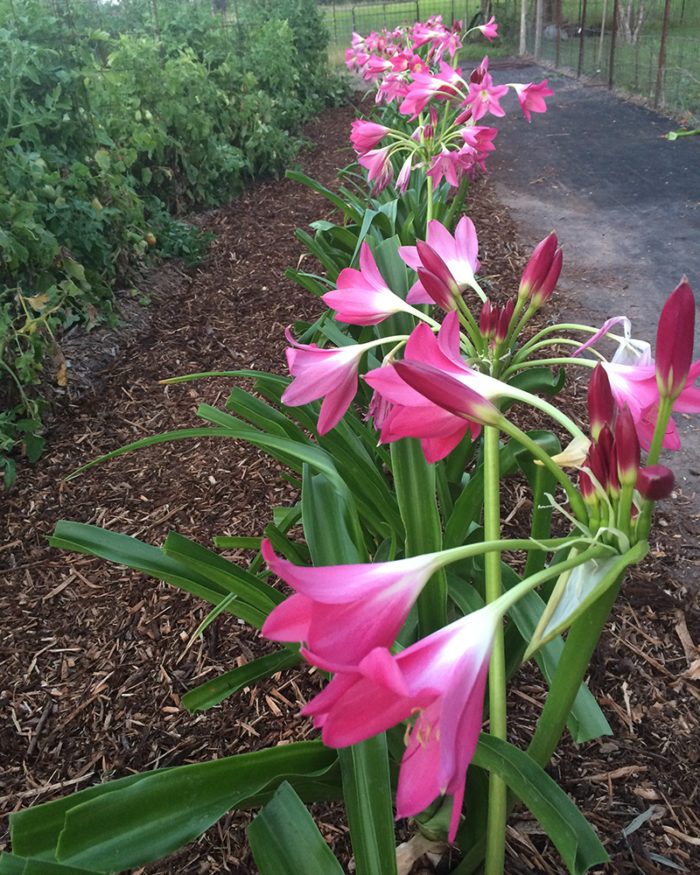
If you’ve ever walked through an old cemetery yard in the Southern Plains, you’ve likely seen crinum lilies (Crinum spp. and cvs., Zones 8–10). Crinums, which aren’t true lilies but rather members of the amaryllis family, are known for their mounds of lush foliage and their gorgeous lilylike flowers carried on long stalks. These plants are tough, showy, robust, and adaptable. They form large bulbs underground that can live for decades, meaning that many crinum collections outlive their owners. Crinums have an interesting horticultural history as one of the first garden plants to be hybridized widely, and they were very popular as pass-along plants in the 1800s and 1900s, moving from friend to friend and garden to garden. When folks built or bought a new house, flowering bulbs were a common housewarming gift, one that continued to give for years on end.
Nowadays it is somewhat rare to see these heirloom bulbs growing in suburban yards and new developments. They are more likely to be spotted around old homesteads, in cemeteries, and at historical sites, where they continue to thrive for years on end despite partial or complete neglect. Why the decline in popularity for such a hardy, beautiful plant? For starters, crinums aren’t usually well-suited to typical commercial production. However, they continue to be an excellent choice for Southern gardeners looking for outstanding seasonal showpieces. Because they are native to tropical parts of the world, they thrive in hot climates and can tolerate extreme drought and flooding conditions.
Luckily there are still some nurseries that offer excellent selections. Tejas Bulbs is one. A collaboration between horticulturists Steve Lowe and Phillip Schulze, Tejas Bulbs has been operating in Central Texas since 1984. Schulze describes crinums as “the most interesting heirloom bulbs because they are the most diverse and reliable.” He recommends the following crinums for gardeners in the Southern Plains.
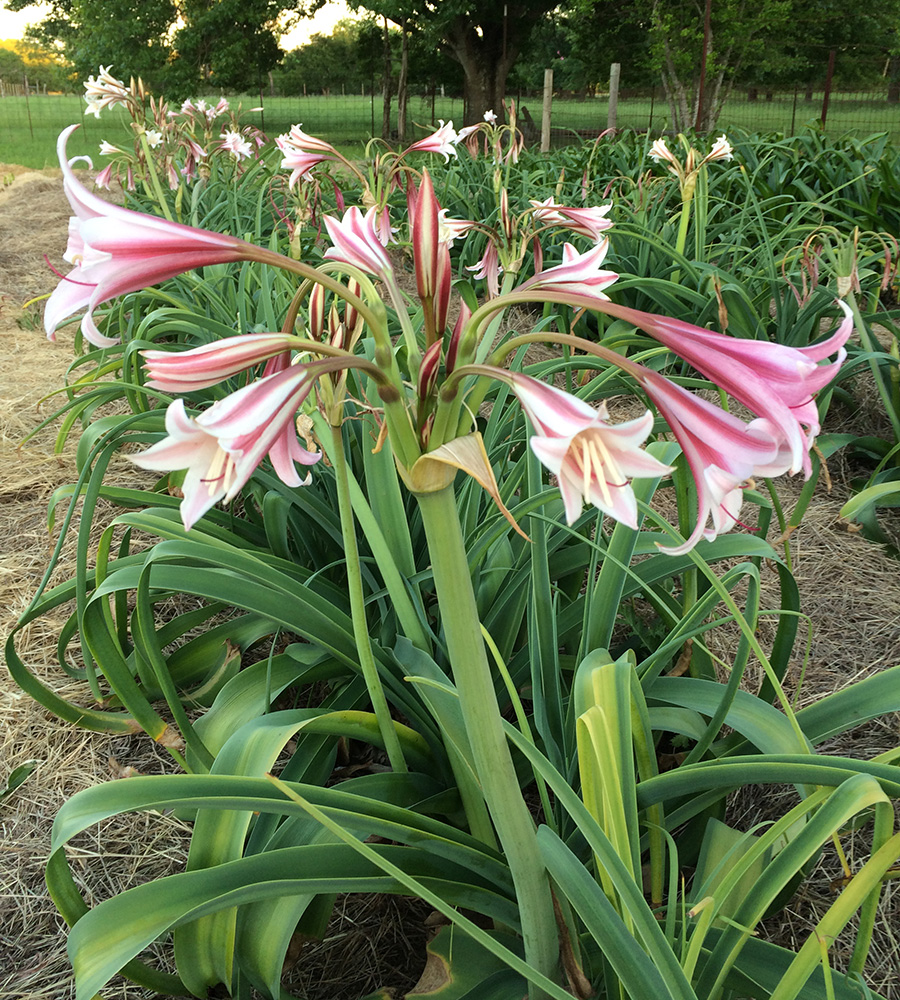
‘Sacramento’
‘Sacramento’ (Crinum bulbispermum ‘Sacramento’, Zones 6–10) is a very cold-hardy crinum that can be planted as far north as Zone 6. Its flowers are a white to pale pink with red stripes, and it blooms very early (late March in Central Texas, later as you move north). One of its distinguishing characteristics is its foliage, which has a slightly bluish color compared to other crinums. This species of crinum produces abundant seed and is a parent to many of the best hybrids.
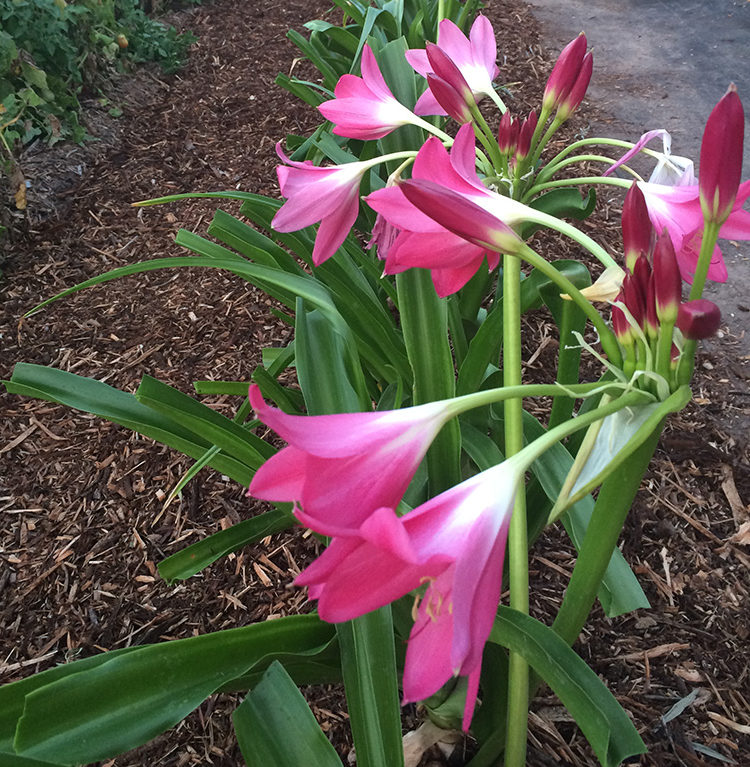
‘Bradley’
‘Bradley’ (Crinum ‘Bradley’, Zones 7–10) is a hybrid from Australia with dark pink open-faced blossoms. It blooms from early to midsummer and has more narrow foliage than most. Its tall flower spike (about 3 to 4 feet) is held high above the foliage.
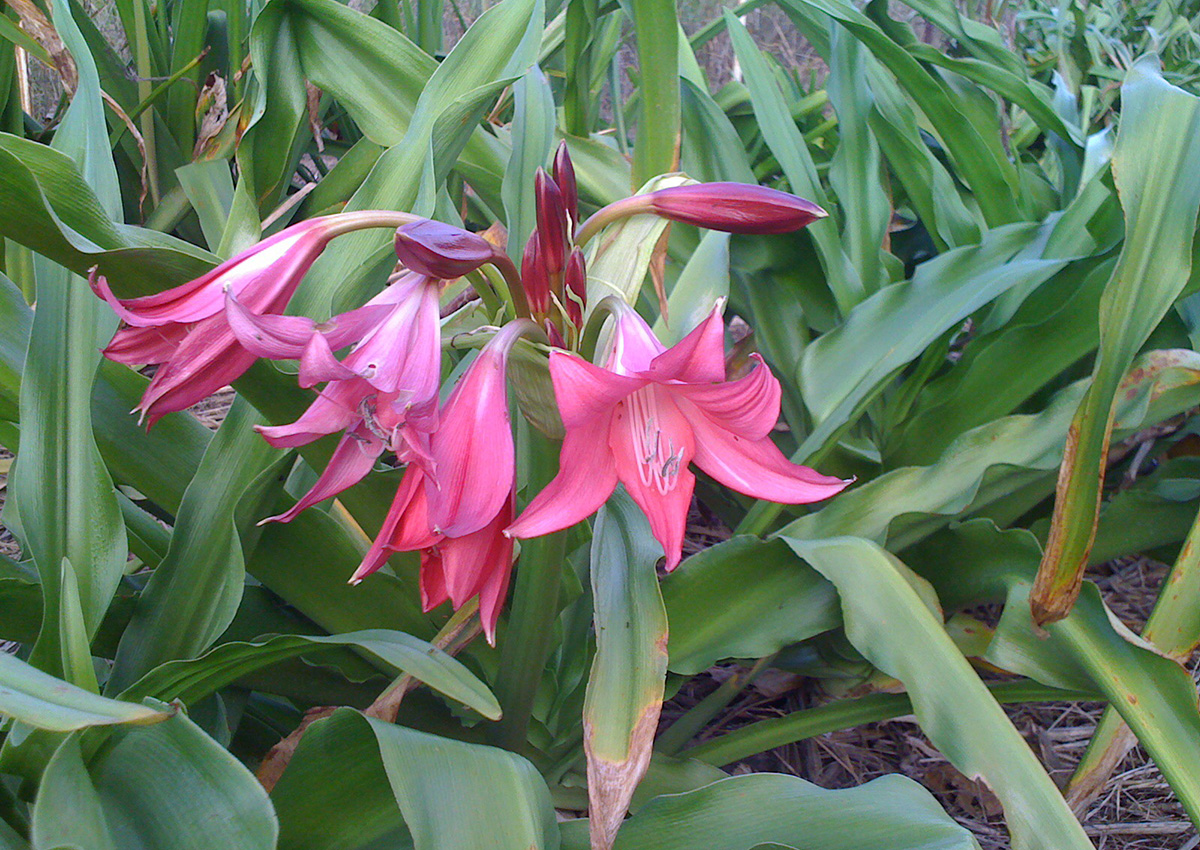
‘Ellen Bosanquet’
‘Ellen Bosanquet’ (Crinum ‘Ellen Bosanquet’, Zones 6b–10) is known to have the darkest wine-red flowers on the crinum spectrum. It has upright, stiff foliage and blooms in midsummer from June to July.
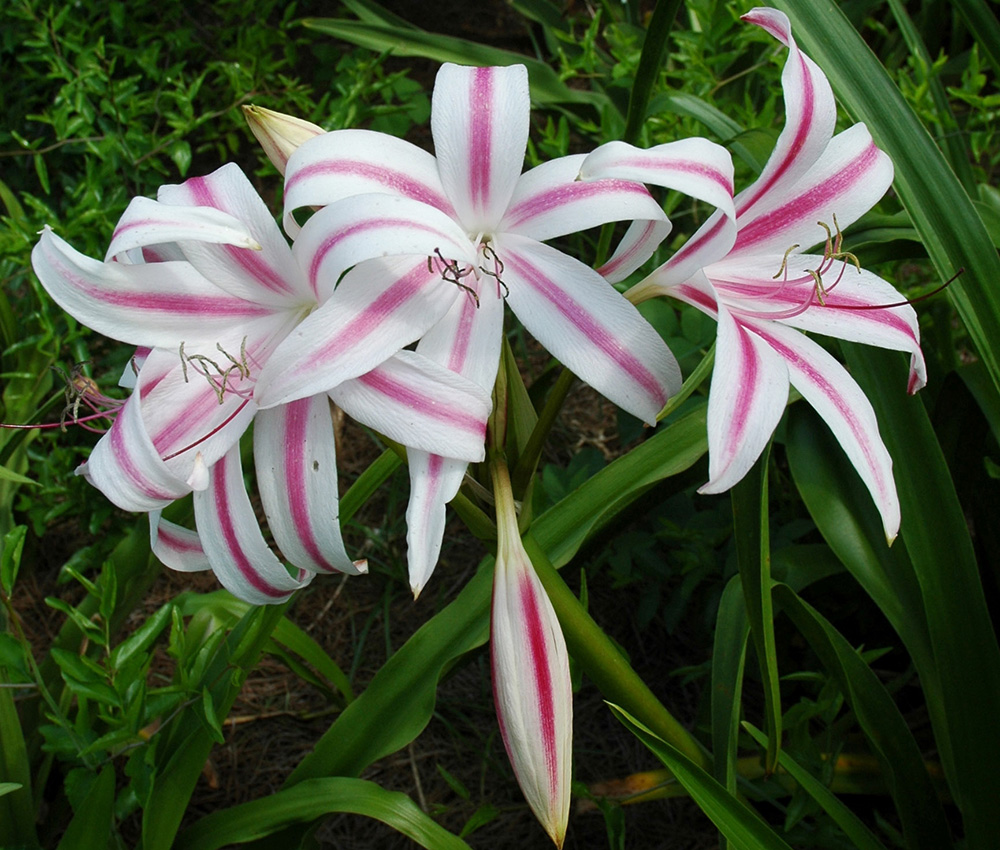
‘Stars and Stripes’
Reaching heights of only 2 to 3 feet, ‘Stars and Stripes’ (Crinum digweedii ‘Stars and Stripes’, Zones 7b–10a) is much more compact than most other crinums, making it a great choice for smaller spaces. The bulbs themselves never grow larger than about the size of a baseball, as opposed to many other varieties that can get huge. ‘Stars and Stripes’ is memorable for its white flowers with brilliant red stripes radiating from their centers, which appear from July to August.

‘Twelve Apostles’
This beautiful crinum (Crinum eboracii ‘Twelve Apostles’, Zones 7b–10) is a very old hybrid that blooms in the fall from October to November, typically up until the first freeze. It gets its name from the fact that it has twelve flowers per scape, which are pink in color with a muted pink stripe. They get large—about 4 feet tall—and are strikingly fragrant.
All of these bulbs do well with little care, but they bloom best in full sun (or mostly sun). While they are extremely drought tolerant, they look their best when receiving regular water. Phillip Schulze of Tejas Bulbs recommends fertilizer, particularly liquid fertilizer, to enhance flowering. He says that more-established clumps have a longer bloom season and are more likely to have out-of-season flowers, blooming far past their usual end dates. He also recommends chopping the foliage back if it looks particularly tired or worn, as it will come back fresh. Schulze recommends having several different crinum varieties in the garden so that the bloom times are staggered.
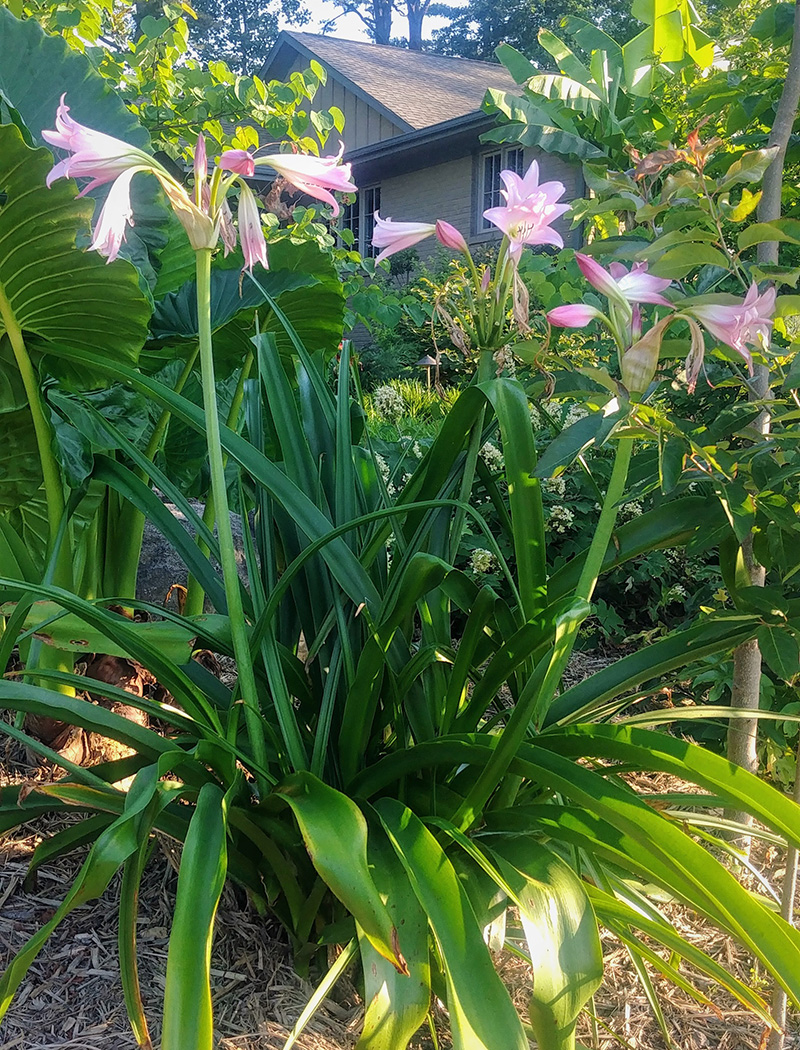
Tejas Bulbs supplies all of these varieties of crinum, as well as several others (such as ‘Maiden’s Blush’, ‘Cecil Houdyshel’, and ‘Claude Davis’) to local nurseries such as The Natural Gardener in Austin, Texas. They can also be found seasonally at the New Braunfels Farmers Market and at special events such as Peckerwood Garden’s Budding Out festival. The best way to contact them is through their Instagram, @Tejasbulbs, or through email at schulzecrinum@gmail.com.
—Karen Beaty is a horticulturalist at the Lady Bird Johnson Wildflower Center in Austin, Texas.





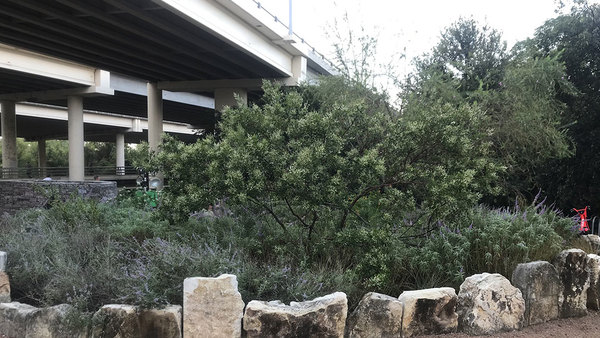













Comments
Log in or create an account to post a comment.
Sign up Log in